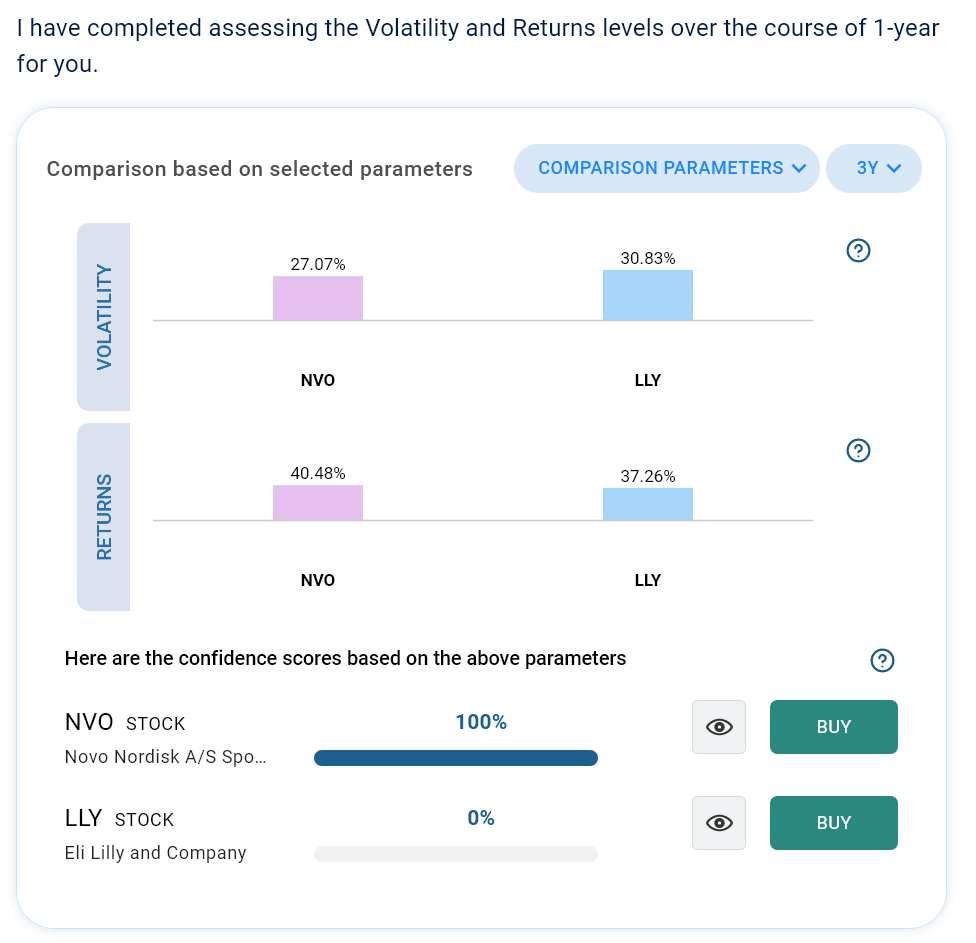Editor’s Note: Our experts here at INO.com cover a lot of investing topics and great stocks every week. To help you make sense of it all, every Wednesday we’re going to pick one of those stocks and use Magnifi Personal to compare it with its peers or competitors. Here we go…
According to recent reports, the World Health Organization (WHO) may for the first time include drugs that combat obesity on its “essential medicines list,” which is used to guide government purchasing decisions in low- and middle-income countries.
This will only add to the buzz around these drugs, which is approaching the levels surrounding artificial intelligence (AI) and chatbots like GPT-4.
Despite the hype, we believe investors are right to be excited about the drugs.
These drugs will find a quickly growing market from expanding waistlines. That’s because obesity is growing in tandem with rising global prosperity. A bad side effect of prosperity is that consumption of not-so-healthy foods rises a lot, as does the prevalence of occupations requiring less physical work.
Obesity already affects about 650 million people around the world. America’s waistline is among those rapidly expanding—almost half of Americans will be obese by 2030, a Harvard study found. It also estimated that about 18% of healthcare spending would then go to related conditions of obesity.
No wonder, then, that Morgan Stanley thinks the market for weight-management medicines could reach $54 billion in just seven years—with $31.5 billion of this from the U.S. alone.
Companies behind the new obesity drug treatments are flying high:
Novo Nordisk (NVO) — the dominant player in diabetes treatments — generated $2.4 billion in sales from obesity treatments last year. And it has barely started to widely distribute its new obesity drug, Wegovy. Its shares are up 43% over the past year, and 15% year-to-date.
Eli Lilly (LLY), whose diabetes drug, tirzepatide, should get regulatory approval to treat weight loss this year, has seen its stock price rise 17.5% over the last year, although it is down 7% year-to-date.
So, we thought we’d do a comparison of the companies. The easiest way to do that is to ask Magnifi Personal to do it for us. It’s as simple as asking this investing AI to “Compare NVO to LLY” and selecting a three-year timeframe.
You can do it, too. Want a 90-day free trial? Just click here.
Here’s the result:
This is an example of a response using Magnifi Personal. This image is not a recommendation or individual advice. Please see bottom disclaimer for additional information, including INO.com’s relationship with Magnifi.
As you can see, over three years, NVO comes out on top in terms of both returns and volatility.
This ability to have an investing AI pore over reams of data for you in seconds and spit out an easy-to-understand comparison of two or more stocks is an invaluable tool in deciding where to invest next.
We recommend you try it out. Click here to see how.
Magnifi Personal makes research like this as simple as typing a question. You can easily do this yourself, or ask Magnifi Personal to add other measures to the comparison, including dividend, valuation metrics such as P/E or P/B ratios, gross margin, and more. Just click here to get a free trial!
Latest from Magnifi Learn: As the world becomes increasingly connected online, cybersecurity will become a critical element of personal and national security.
INO.com, a division of TIFIN Group LLC, is affiliated with Magnifi via common ownership. INO.com will receive cash compensation for referrals of clients who open accounts with Magnifi.
Magnifi LLC does not charge advisory fees or transaction fees for non-managed accounts. Clients who elect to have Magnifi LLC manage all or a portion of their account will be charged an advisory fee. Magnifi LLC receives compensation from product sponsors related to recommendations. Other fees and charges may apply.
Diversification does not guarantee a profit or protect against a loss in a declining market. It is a method used to help manage investment risk.
Mutual Funds and Exchange Traded Funds (ETFs) are sold by prospectus. Please consider the investment objectives, risks, charges, and expenses carefully before investing. The prospectus, which contains this and other information about the investment company, can be obtained from the Fund Company or your financial professional. Be sure to read the prospectus carefully before deciding whether to invest.

